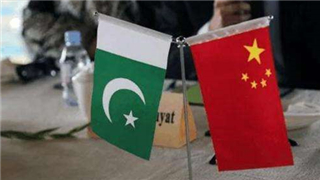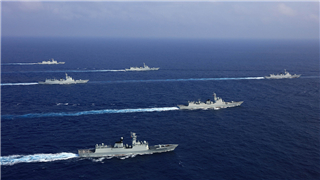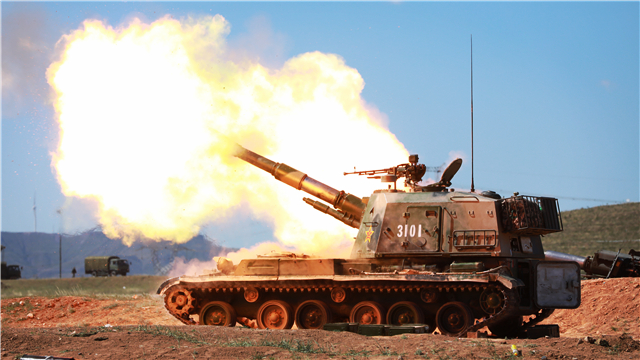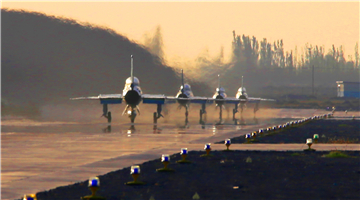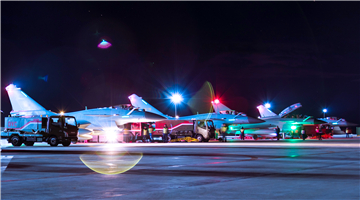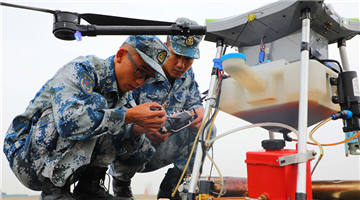By Fu Xiaotao
On September 17, the US Air Force (USAF) Secretary Heather Wilson delivered a speech titled "The Air Force We Need" at the Air Force Association’s Air Space and Cyber Conference. She laid out a proposal to grow the USAF from existing squadrons of 312 to 386 as scheduled.
On June 18 this year, US President Trump directed the US Department of Defense (DOD) to begin the process of establishing the US Space Force (USSF) which separates the space force from the USAF (USAF). Against the backdrop, the USAF Secretary initiated the expansion plan in a return to geopolitical competition between great powers based on the US National Defense Strategy report. In fact, the USAF considers safeguarding its military service status by seeking resources for expansion.
History: Rapid development
The USAF has developed from the aerial warfare service branch of the armed forces into a powerful air force which could alter the outcome of a battle in just a few decades.
The earliest predecessor organization leading up to today’s USAF is the Aeronautical Division of the US Army Signal Corps established in 1907. The US Army Air Forces (USAAF) became a separate military service, USAF, in 1947 after the Second World War.
Before the emergence of intercontinental ballistic missiles (ICBMs), strategic bombers were the primary delivery method for nuclear weapons. In the 1940s and 1950s, the nuclear strategy pursued by the two major military groups - US and Soviet military groups - was a nuclear bombing strategy relying mainly on the air force. Based on the recognition of “prioritizing the establishment of a strong strategic air force”, the USAF's status in the construction of the national armed forces was prominent and therefore developed rapidly during this period.
By 1960, the USAF accounted for 46% of the US military forces of Army, Navy and Air Force, and even surpassed the Army. Driven by the tide of the times, the USAF has developed from a division of the US Army Signal Corps into a separate service that could alter the outcome of a battle in just a few decades.
At the end of the 20th century, many advanced and new technologies have been widely used in the aviation field, which has significantly improved the combat capability of the air power, and the USAF development flourished.
The air force also played a significant role in the Gulf War, the Iraq War, and the Afghan War. This is especially true in the Kosovo war, in which the US-led NATO carried out a 78-day bombing of Yugoslavia with a large-scale air strike until it reached its political goal. To a certain extent, it confirms the view ofGiulio Douhet,author ofCommand of the Air,that "independent air operations are the main style of strategic actions for future wars, and the air battlefield will be the decisive battlefield."
Reality: Seeking for expansion
It's planned to expand from the existing 312 to 386 squadrons, and the number of personnel will increase by approximately 40,000.
The new USNational Security StrategyandNational Defense Strategyfocus on strategic competition among great powers. As a subordinate strategy, the service strategy must be subject to and serve the national security strategy and national defense strategy.
General David L. Goldfein, Air Force Chief of Staff, said the goal is to defend the United States, provide effective nuclear deterrence, and defeat potential "reciprocal threats" from great powers while curbing the threat of terrorism.
From the comments of the USAF senior officials as well as related documents, it is easy to see that the USAF will seek to construct with the focus on dealing with competitions from big countries and strive to build an air force that can win the advanced combats to fulfill its goal of "global alert, global reach and global power deployment".
The USAF seeks to expand and optimize its forces. The USAF’s active service consists of aviation units, space units, special operations forces, support and reinforcement units, and is usually organized in accordance with a sequence of the aviation team, wing team, brigade team, and squadron. According to Wilson's expansion plan and future force structure, the USAF will expand from the existing 312 to 386 squadrons (see charts). This goal is expected to be achieved around 2030, which will increase the number of Air Force personnel by approximately 40,000.
The number of personnel in the cyber and missile squadrons that can receive support from functional command and other services remain unchanged, while the number of personnel in the bomber squadron, command and control intelligence surveillance reconnaissance squadron, space mission squadron and special operations squadron will increase significantly. This reflects that the USAF has paid great attention to new operational forces such as long-range strikes, special operations, command and information systems and space combats.
In addition, Trump signed theNational Defense Authorization Act for Fiscal Year 2019on August 13, budgeting $39.5 billion for Air Force upgrades, and approving the DOD to purchase 77 F-35 Lightning II Joint Strike Fighters and 15 Boeing KC-46 Pegasus tankers, as well as certain financial support for the Air Force's expansion plan.
The USAF aims to develop Air Force Future Operating Concept. TheUSAF of 2035: Future Operating Conceptreleased in September 2015 clarifies that "agile operations", including five elements of mobility, speed, coordination, balance, and power, are the core operational concepts of the future Air Force.
The five strategic directions for USAF development aim to provide effective deterrence in the 21st century, maintain strong and flexible globally integrated intelligence surveillance and reconnaissance capabilities, ensure the construction of a high-end integration force capable of adapting to full-spectrum operations, seek ways to promote multi-domain integration and continue to seek technologies which can change rules of war.
The five core missions of the Air Force in the future are the self-adaptive domain control, globally integrated intelligence surveillance and reconnaissance, rapid global maneuver, global precision strike, multi-domain command and control.
In order to achieve the requirements of "agile operations", the USAF has organized 10 aerospace expeditionary task forces (AEF) in wartime, each of which has about 180 combat aircraft and 330 early-warning reconnaissance, transportation and fueling aircraft of various types. In peacetime, two expeditionary task forces are on duty so that they can provide instant support to the Joint Combat Command in trouble.
Future: Challenges ahead
There is a gap between fiscal reality and security requirement, and the USSF will also share certain resources.
However, a dream is only a dream but the reality is cruel. Although the USAF has proposed an ambitious expansion plan, the actual implementation is subject to some constraints, mainly two aspects.
Firstly, it's in short of funds. Although the US defense budget for FY 2019 is as high as $716 billion, up 2.6% from the previous fiscal year, but every service of the US military has proposed an ambitious expansion plan, which is obviously infeasible to realize. As the US Foreign Policy website quoted sources as saying: "There is a gap between fiscal realities and security needs."
Secondly, it faces the competition from other military services. The relations between the various services of the United States are both cooperative and competitive. All the services are equipped with several tactical missiles. Besides, the Navy is equipped with a large number of carrier-based aircraft. This means that all services can perform certain air strike missions sharing certain tasks of the USAF.
At present, the US military attaches great importance to new combat forces such as the Internet: the Cyber Command was upgraded to first-level command recently, and the space force that originally served as part of the Air Force will soon be upgraded as a special service, making it equal to the USAF. The USSF, an important new combat force, is expected to share some resources after its separation in 2020.
As a result, the USAF’s globally integrated intelligence surveillance and reconnaissance capabilities would be significantly reduced, and the status of USAF in the US military services would decline as well, which makes it unfavorable to seek for its military budget and other resources in the future.
Disclaimer:The author is Fu Xiaotao with theNational Defense Universityof the Chinese People's Liberation Army. The article was published on the PLA Daily on Oct. 10. It is translated from Chinese into English and edited by China Military Online.


